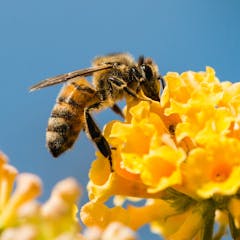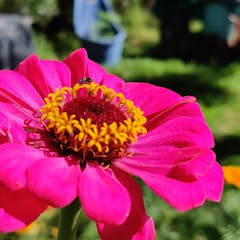
Articles on Pollination
Displaying 1 - 20 of 74 articles

If a colony of flying foxes sets up in your backyard, you might be annoyed – or concerned. But these gentle bats are vital to our forests.

New research shows honeybee hive clusters are a sign of desperation, not insulation.

Two EU-funded projects are looking at high-tech solutions that could transform honeybee colonies into bio-hybrid entities.

You’re a bee, and your favourite flower is out of nectar. What do you do?

We’re making life tough for insects – and not just by swatting them away with a newspaper.

The Varroa mite is here to stay. This will have wide-ranging impacts on beekeeping and the crops that rely on honey bee pollination in Australia.

Invasive Asian hornets are a top predator of bees in the UK – and sightings are starting to soar.

Have we overlooked the intelligence and value of wasps?

Moths are often overlooked as the poor cousin to butterflies, but they are truly remarkable creatures.

Feral honeybees have become a major problem in Australia. It’s time to develop effective and practical control measures.

The surprising frequency of bees on coins through history shows the enduring importance to human societies of our buzzing companions.

New research suggests insects have pollinated flowers since the pollen-bearing blooms first evolved more than 140 million years ago.

Australia is the last continent to be invaded by the dangerous honey bee parasite, and has an opportunity to be the first to eradicate it.

Scientists are learning amazing things about bees’ sensory perception and mental capabilities.

Before you reach for the weed killer, spare a thought for struggling pollinators.

New research provides insights into the evolution and ecology of Australian bees. The capricious masked bee employs female nest guards in a cooperative social structure. Meanwhile, fussy feeders abound.

Bees and other pollinators are key to food production, but they’re hard to keep an eye on. Now, AI software is helping track these essential farm workers.

Seventy-two per cent of native bumblebee species in North America are cutting their winter hibernation short by timing their emergence to earlier spring onsets.

People wouldn’t last long without the countless other species we depend on for survival.

Celebrating the European honeybee is a misplaced opportunity to honour our forgotten native pollinators.
